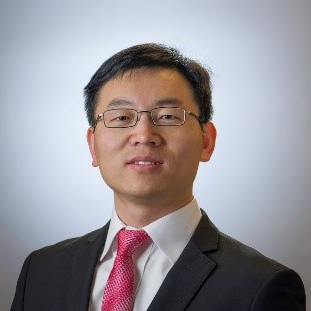Additive Nano-Manufacturing
A special issue of Micromachines (ISSN 2072-666X). This special issue belongs to the section "D:Materials and Processing".
Deadline for manuscript submissions: closed (30 September 2021) | Viewed by 6563
Special Issue Editors
Interests: additive manufacturing; quantum sensing; nanophotonics
Interests: laser fabrication for biomimetics; laser-matter interactions; micro/nano-optics
Special Issues, Collections and Topics in MDPI journals
Interests: nanofabrication; nanophotonics; micro-optics; 3D laser fabrication (additive and subtractive); ablation; light–matter interaction; solar hydrogen
Special Issues, Collections and Topics in MDPI journals
Special Issue Information
Dear Colleagues,
Additive manufacturing, also known as 3D printing that forms structures layer upon layer at the macroscale, has attracted much attention in recent years. It has been used by engineers for rapid prototyping and low-volume production. The appeal of additive manufacturing lies in it being a maskless and customizable approach with reduced material consumption. Unfortunately, such a rapid prototyping technique is yet to be developed at the nanoscale for additive nano-manufacturing, which will be the backbone for the realization of the promises made on the prospects of nanotechnology. Accordingly, this Special Issue seeks to showcase research papers, short communications, and review articles that focus on novel additive manufacturing methods at the nanoscales, especially under ambient conditions in either a gaseous or liquid environment.
We look forward to receiving your submissions!
Dr. Chenglong Zhao
Dr. Lei Wang
Prof. Dr. Saulius Juodkazis
Guest Editors
Manuscript Submission Information
Manuscripts should be submitted online at www.mdpi.com by registering and logging in to this website. Once you are registered, click here to go to the submission form. Manuscripts can be submitted until the deadline. All submissions that pass pre-check are peer-reviewed. Accepted papers will be published continuously in the journal (as soon as accepted) and will be listed together on the special issue website. Research articles, review articles as well as short communications are invited. For planned papers, a title and short abstract (about 100 words) can be sent to the Editorial Office for announcement on this website.
Submitted manuscripts should not have been published previously, nor be under consideration for publication elsewhere (except conference proceedings papers). All manuscripts are thoroughly refereed through a single-blind peer-review process. A guide for authors and other relevant information for submission of manuscripts is available on the Instructions for Authors page. Micromachines is an international peer-reviewed open access monthly journal published by MDPI.
Please visit the Instructions for Authors page before submitting a manuscript. The Article Processing Charge (APC) for publication in this open access journal is 2100 CHF (Swiss Francs). Submitted papers should be well formatted and use good English. Authors may use MDPI's English editing service prior to publication or during author revisions.
Keywords
- Nano-manufacturing,
- Nanofabrication
- Nano-printing
- Self-assembly
Benefits of Publishing in a Special Issue
- Ease of navigation: Grouping papers by topic helps scholars navigate broad scope journals more efficiently.
- Greater discoverability: Special Issues support the reach and impact of scientific research. Articles in Special Issues are more discoverable and cited more frequently.
- Expansion of research network: Special Issues facilitate connections among authors, fostering scientific collaborations.
- External promotion: Articles in Special Issues are often promoted through the journal's social media, increasing their visibility.
- Reprint: MDPI Books provides the opportunity to republish successful Special Issues in book format, both online and in print.
Further information on MDPI's Special Issue policies can be found here.








